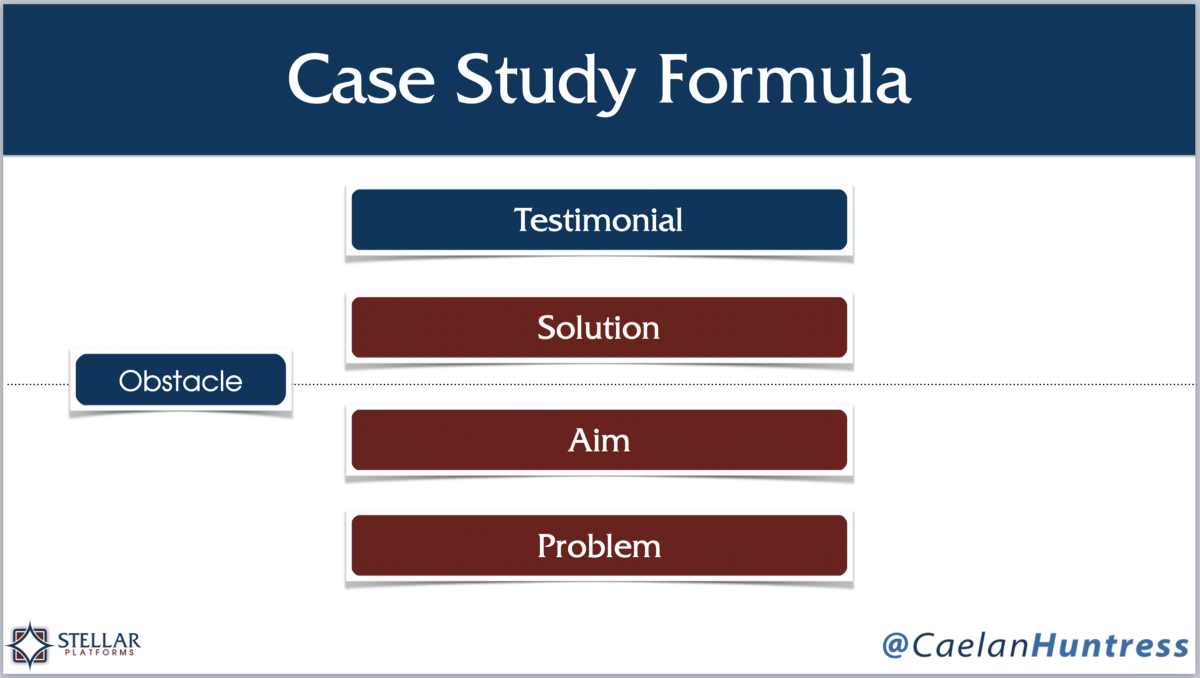Use Storytelling and Statistics to Illustrate Results
When Timothy Sykes hired Neil Patel to increase his website traffic, Neil did what he was hired to do. The number of visitors from Timothy’s emails to his landing pages increased by 26%. But that was not the big win.
What was really interesting, Neil says, is that by using case studies in the emails he sent, Timothy’s overall sales grew by 185%. The closing ratio of the traffic to the landing page increased by 70%. This increased his client’s profit by $1.2 million a year.
What worked wasn’t increasing the clicks, it was increasing the quality of those clicks.
Not all website traffic is the same.
When someone clicks on a link in your email to view your landing page (or video or article or whatever), that’s nice. What counts is revenue. If your clicks are not contributing to the bottom line, clicks are just a vanity metric. The quality of that traffic can be measured in the commercial (or community) actions taken after they click.
How much preparation does your traffic need?
Some of the most successful email broadcasts are ‘9-word-emails.’ The author sends a short email, about nine words long, to ask if you are interested in buying something. If the timing is right, some people say yes.
9-word-emails utilise the power of the first step of the Marketing Cycle - they know you have an offer. To get them to like it, and to trust you, requires time and education. If your previous content has already nurtured them to like you and to trust you, a 9-word-email can make a quick close.
But what about new leads who are just learning about you? How can you educate them about the benefits of buying from you? It may be difficult to get someone to read all the details of your brochure, but it is easy to harness attention by telling a story.

The 5-act dramatic structure was defined by Gustav Freytag in 1863. The progression laid out in the first row above is universal across cultures. Our brains are hardwired for processing stories this way. For thousands of generations, our ancestors sat around the fire to share their favourite tales. The stories that lasted through the ages were the ones that followed a specific progression of emotions. This progression releases a series of hormones in our brains, and we have come to expect them in this order.
If you skip a step in the 5-act structure, your story will feel incomplete. People may stop listening, if their brain expects an endorphin or dopamine hit that doesn’t happen. By describing a series of events along this universal pattern, you are much more likely to keep your audience’s attention.
A good case study harnesses the neuroscience of storytelling.
We want people to feel empathy for our customers. We want them to identify with their situation, and think “Hey, I’m like that.”
Then we want to illustrate the problems that this customer faces. (“I face that problem too!”) The case study illustrates how the challenge was overcome, describing the obstacles faced along the way. By the end of your story, your future customer thinks, “That’s what I want for my own story, too.”
Use this simple case study formula
A case study has four separate stages:
- the problem that your customer faced,
- the aim of how it was planned to be solved,
- the solution of how you solved it, and
- a testimonial of what the customer thought about the process.

There’s a fifth component of a case study called an obstacle, which is optional to highlight. If you can clarify the obstacle between the aim and the solution, this gives exciting conflict to your story.
(See examples of case studies using this formula here.)
Creating case studies with interviews
Writing a paragraph about each of these components can help you create a great case study in no time. But rather than writing these paragraphs yourself, I recommend you interview your best customers. This gives you quotes, testimonials, and specific phrases that will resonate with your audience.
“Asking the right questions in an interview will reveal your customer’s story from start to finish - the pains that drove them, the factors that made their decision, and the results they’ve achieved.” - Joel Klettke, Case Study Buddy
Use stories to tell statistics
Providing statistics validates the effectiveness of what you sell (especially for left-brain thinkers). But if you throw a collection of numbers and percentages at a prospect, it is easy for them to get overwhelmed and confused. We don’t want statistics to obscure the main point, we want them to support it.
Right-brained people prefer a one-minute video to a spreadsheet. You can convey highly complicated information in a spreadsheet, but it requires the skill of data interpretation. Not everyone can do that (or wants to do that). But we can all interpret stories.
Did you notice how many statistics I slipped into the story at the start of this article? By creating a story arc, I was able to provide you with lots of data and numbers without overwhelming you. Storytelling with a case study is a concise method to package benefits and results.
Share stories that make an impact
Before-and-after stories of your previous customers enable future customers to recognise themselves on the same journey.
“Case studies are strong sales tools to close the deal. You know when you send out a proposal and you don’t get an answer right away? Sending that case study is a really sweet thing to do. It’s not aggressive, but it’s educational and it subtly says, ‘Hey, by the way, I killed it here,'” - Mary Iannotti
According to a Hawkeye study, more than 70% of B2B buyers found testimonials and case studies to be the most influential types of content.
If you want to persuade a customer to make a purchase, instead of posting gratuitously on social media, pick up the phone and call a happy customer. Interview them about their experience, and share that experience with your future customers.
If you’d like some help in writing your case studies, you can download my free Case Study Workbook in Google Docs by subscribing to my newsletter.
This article is an excerpt from my book, ‘Marketing Yourself.’ You can read the whole book here.






Leave A Comment